A Guide to Iron for Vegans
For vegans new and old that need tips for meeting their iron needs. This guide includes tips and recipe ideas for improving iron intake and absorption.
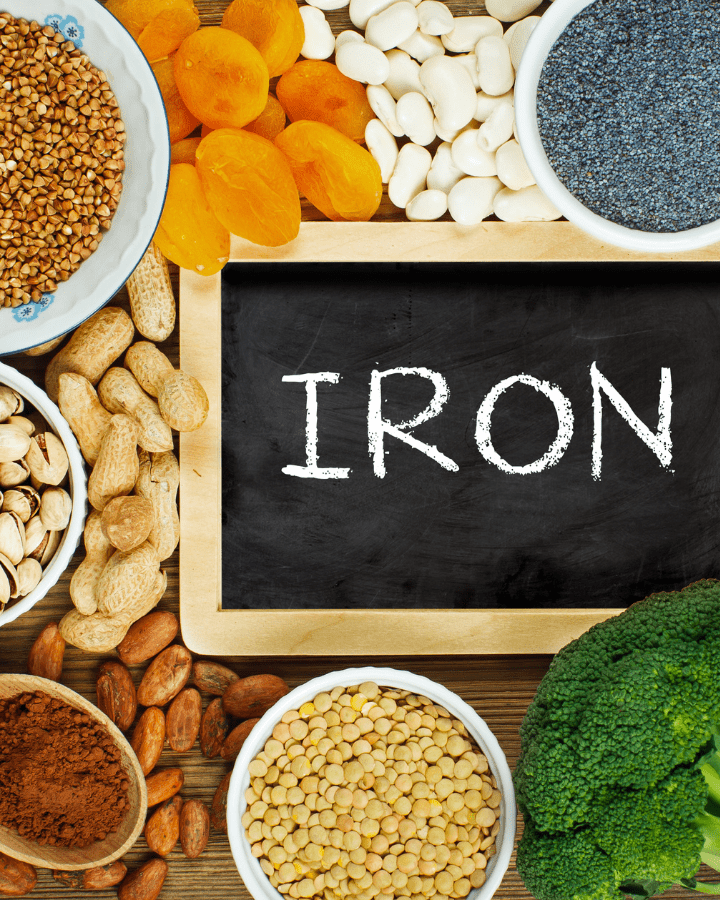
What is Iron?
Iron is a mineral that is responsible for many functions throughout the body including oxygen transport, DNA synthesis, energy production, immunity, and even some hormone production. Iron is also an important mineral needed for growth and development.
For healthy vegans that focus on maintaining balance and variety in their eating, maintaining appropriate iron status should not be a challenge as there are many foods rich in this mineral. This guide was developed to help you better understand iron and learn how to improve your intake and absorption of it.
Types of Iron
- Non-Heme Iron: Typically found in plant and iron-fortified foods. This type of iron tends to be absorbed at a lower rate.
- Heme Iron: Typically found in meat, seafood, and poultry, but they also contain some levels of non-heme iron as well. Heme iron tends to have a higher absorption rate compared to non-heme iron.
It’s important to note that vegetarians and vegans will predominantly be consuming and absorbing non-heme iron. This will help regarding recommendations to help maintain good iron status.
Iron Recommendations
The Food and Nutrition Board (FNB) have developed recommendations for iron and other nutrients based on stages of the life cycle and gender for Americans. These recommendations are based on what is believed to be appropriate intake levels for nonvegetarians.
- Men 19-50 years old: 8 mg daily
- Women 19-50 years old: 18 mg daily
- Pregnant Women 19-50 years old: 27 mg daily
- Lactating Women 19-50 years old: 9 mg daily
- Men 51+ years old: 8 mg daily
- Women 51+ years old: 8 mg daily
According to the FNB, the Recommended Dietary Allowance (RDA) for vegetarians should be set 1.8 times higher than their nonvegetarian counterparts. To put this in perspective, an adult vegetarian woman would need to consume about 32 mg of iron daily, which can seem like a lot!
It is important to note that this recommendation is based on two studies that are inconclusive. There needs to be studies focused on observing iron status of vegetarians over longer periods of time to determine the effects of a vegetarian or vegan diet on iron status. These recommendations also do not take into account the fact that lower iron stores can often lead to adaptation that leads to improved absorption of iron over time in vegetarians and vegans.
Iron needs can also vary from this list under different conditions that result in blood loss, medications or digestive tract diseases. Under these conditions, it might require guidance to likely utilize techniques that help to improve iron intake and absorption or to include a supplement.
Iron Deficiency
Iron deficiency is the most commonly known nutrient deficiency. Diets low in iron may not initially result in symptoms due to the presence of iron stores in the body. However, when those stores run out, you may develop iron deficiency anemia. This results in smaller and less efficient red blood cells that carry less oxygen throughout the body.
Some groups may be more vulnerable to iron deficiency. Those at risk:
- Menstruating teens and women with heavy periods
- Athletes
- Pregnant women
- Infants
- Frequent Blood Donors
- Chronic Illnesses including cancer, gastrointestinal disorders like Celiac’s Disease, or those with heart failure
- Those eating a poor diet
Symptoms of iron deficiency can often represent itself in physical symptoms including fatigue, rapid heart rate, palpitations, and rapid breathing. You might also experience things like pale skin, brittle fingernails, weakness, loss of appetite, hair loss, impaired immunity, inflammation of the tongue, and gastritis. Never use these symptoms as a means to self-diagnosis. You should always consult your primary healthcare provider for additional testing.
If you or your primary healthcare provider is suspicious of iron deficiency, your primary healthcare provider may run a blood panel test to evaluate your iron status. You can normally determine your iron levels by looking at your hemoglobin and hematocrit values with your healthcare providers.
As mentioned, anemia is a consequence of iron deficiency. It is important to note that iron deficiency is not the only cause of anemia and may be the result of other health issues including, but not limited to low vitamin B12 levels.
Impaired Iron Absorption
Phytates. Plant-based foods rich typically contain non-heme iron binding nutrients called phytates. Phytates can interfere with absorption of iron.
Calcium. Inhibits both heme and non-heme iron absorption. This may be of concern for individuals that take calcium supplements. It would be recommended to take such supplements between meals and consult your healthcare provider about recommended doses.
Teas and Coffee. These beverages contain polyphenols like tannins that can inhibit iron absorption. This includes coffee, cocoa, black, green and some herbal teas. It is recommended for those with iron deficiency to avoid drinking coffee and tea for one hour before or after meals.
Can You Take In Too Much Iron?
It is uncommon to reach toxic levels of iron through plant-based sources of iron. However, taking supplements without guidance may increase risk for taking in too much.
If taking in too much iron, you may notice symptoms like constipation or diarrhea, nausea, vomiting, liver dysfunction, and oxidative damage.
Foods Rich in Iron
Iron is found in many foods, and while you may be concerned about consuming enough, I think that half the fear you might have could be resolved with knowing where to find it. Here is a list of those iron rich plant based foods:
Legumes, Peas, Lentils (1 cup, cooked)
- Firm Tofu: 6.8 mg
- Lentils: 6.6 mg
- Black Beans: 5.2 mg
- Black-eyed Peas: 5.2 mg
- Navy Beans: 4.8 mg
- Chickpeas: 4.7 mg
- Tempeh: 4.5 mg
- Kidney Beans: 3.9 mg
- Pinto Beans: 3.6 mg
- Edamame: 3.5 mg
- Split Peas: 2.5 mg
Grains (1 cup, cooked)
- White Rice: 2.8 mg
- Brown Rice: 1.1 mg
- Quinoa: 2.7 mg
- Corn: 1.1 mg
- White Pasta: 1.5 mg
- Whole Wheat Pasta: 2.0 mg
- Oats: 2.1 mg
- Millet: 1.1 mg
- Wild Rice: 0.9 mg
- Bulgar: 1.7 mg
- Buckwheat Groats: 4 mg
Nuts & Seeds (1 oz)
- Cashews: 1.8 mg
- Almonds: 1 mg
- Pistachios: 1.2 mg
- Walnuts: 0.9 mg
- Sunflower Seeds: 2.2 mg
- Pumpkin Seeds: 2.3 mg
- Flax Seeds (1 tbsp): 0.5 mg
- Chia Seeds: 2.`9 mg
- Hemp Seeds (3 tbsp): 2.3 mg
Nut & Seed Butters (2 tablespoons)
- Peanut Butter: 0.6 mg
- Almond Butter: 1 mg
- Cashew Butter: 1.6 mg
- Tahini: 1.2 mg
Vegetables (1 cup, cooked)
- Spinach: 6.4 mg
- Broccoli: 1.1 mg
- Kale: 1.1 mg
- Swiss Chard: 4 mg
- Brussel Sprouts: 1.2 mg
- Green Peas: 2.4 mg
- Beet Greens: 2.7 mg
- Sweet Potato: 1.4 mg
Dried Fruit (¼ cup)
- Raisins: 0.7 mg
- Apricots: 0.5 mg
- Prunes: 0.4 mg
- Dates: 0.3 mg
I think one thing to remember when it comes to improving iron status is that overwhelming yourself and being meticulous with every single milligram of iron going in will not be helpful or realistic for you to do. It is in your best interest to instead pay attention to methods for improving iron intake and absorption.
If you are new to veganism, make sure you are balancing your plate appropriately and eating enough. It may be in your best interest to consult with a dietitian knowledgeable in plant based eating to help make sure you are replacing nutrients appropriately.
Tips for Increasing Iron Absorption
Pair Iron with Vitamin C
When consuming iron-rich foods, it’s always a good idea to pair it with something that has vitamin C because it actually increases the bioavailability of non-heme iron even when those foods include iron inhibitors like phytates and polyphenols. Good examples may include things like
- Adding a fresh squeeze of lemon juice over lentils or bean curry
- Serving your black bean burrito bowl with some diced raw bell peppers
- Topping your oatmeal with some strawberries
Include Lysine-rich Foods
L-lysine is an amino acid that is abundant in plant based foods like legumes, peas, lentils, quinoa, and peanuts. These vegan protein sources rich in lysine actually help to improve absorption. Considering they are high in protein, L-lysine and iron, these become a really great source to focus on for maintaining good iron status.
Soaking and Sprouting
I have discussed sprouting previously, and an important thing to note is that this method and process does help to reduce the phytate content for certain plant foods like beans and grains. This study suggests that soaking and sprouting, decreased phytates which leads to improved availability of minerals like iron.
Whole Grains vs Enriched, Refined Grains
Including a mix of both whole and refined grains has it’s advantages for iron intake. While whole grains will naturally have additional minerals available, enriched grains may have a little more added to it that can be an advantage for those struggling to meet their needs.
If You Can, Include Soy Foods
While still containing phytates, the type of iron in soy foods does not seem to be impacted by it during absorption. And if you are a fan of fermented soy like tempeh, the fermentation process actually helps make iron more available.
Include More Iron-Rich Foods Regularly
If you are healthy, one way to make sure that you are getting adequate iron is to make sure you are prioritizing balanced and varied meals that include iron-rich foods like legumes, grains, nuts and seeds.
Cooking Tools
In theory, items like cast iron pans and the Iron Fish (ingots) can be cooking tools you use that leach some iron into your food. The amount of iron made available from these tools is dependent on the acidity of the food being cooked, the cooking time, and the age of the skillet. There is still limited evidence regarding the efficacy of iron-containing pots and ingots when it comes to reducing iron deficiency.
Supplementation
Is an option that may be appropriate for vegans and non-vegans if determined to have consistently low iron status or with clinically determined anemia. Your healthcare provider should help with determining the appropriate amount and how long to prescribe this supplementation to help correct iron status. It’s important to seek out qualified medical professionals when determining needs to prevent taking doses that could be harmful.
Iron-Rich Recipes
Breakfast Ideas
- High Protein Strawberry Oatmeal
- Coconut Cardamom Baked Oatmeal
- Herb Tofu Breakfast Sandwich
- Fluffy Tofu Scramble
Lunch Ideas
Dinner Ideas
- Vegan Walnut Taco Meat with a fresh squeeze of lime juice
- Lemon Basil Tofu
- Chickpea Coconut Curry
- Latin Nourish Bowl
Snack Ideas
- Chickpea Cookie Dough Bites
- Oatmeal Chocolate Chip Bars
- Chocolate Chip Quinoa Cookies
- Black Bean Brownies
Summing It Up
Iron is an important mineral that is easy for healthy individuals that eat a varied diet to maintain. This can be done through use of non-heme iron-rich plant sources in the case of vegetarians and vegans.
There are individuals who might be at risk of iron deficiency. In these cases they should be tested and provided support to help improve iron intake and absorption. There are many plant foods that are rich in iron. Focusing on including foods like legumes, chickpeas, lentils, peas, whole grains, nuts and seeds regularly can be really helpful to improve iron intake. To help improve absorption, it might be in your best interest to utilize methods like including vitamin C rich foods at main meals and reducing iron inhibitors as best as possible.
For further reading and more in depth discussion on Iron, I recommend the Iron Part I and Part 2 articles written on Vegan Health.
Resources
U.S. Department of Health and Human Services. (2021). Office of Dietary Supplements – Iron. NIH Office of Dietary Supplements. https://ods.od.nih.gov/factsheets/Iron-HealthProfessional/.
Abbaspour N, Hurrell R, Kelishadi R. Review on iron and its importance for human health. J Res Med Sci. 2014;19(2):164-174.
Institute of Medicine. Food and Nutrition Board. Dietary Reference Intakes for Vitamin A, Vitamin K, Arsenic, Boron, Chromium, Copper, Iodine, Iron, Manganese, Molybdenum, Nickel, Silicon, Vanadium, and Zinc : a Report of the Panel on Micronutrients. Washington, DC: National Academy Press; 2001.
Geerligs PD, Brabin BJ, Omari AA. Food prepared in iron cooking pots as an intervention for reducing iron deficiency anaemia in developing countries: a systematic review. J Hum Nutr Diet. 2003 Aug;16(4):275-81. doi: 10.1046/j.1365-277x.2003.00447.x. PMID: 12859709.
Alves C, Saleh A, Alaofè H. Iron-containing cookware for the reduction of iron deficiency anemia among children and females of reproductive age in low- and middle-income countries: A systematic review. PLoS One. 2019;14(9):e0221094. Published 2019 Sep 3. doi:10.1371/journal.pone.0221094
Luo Y, Xie W. Effect of soaking and sprouting on iron and zinc availability in green and white faba bean (Vicia faba L.). J Food Sci Technol. 2014;51(12):3970-3976. doi:10.1007/s13197-012-0921-7
Shi Z, Hu X, Yuan B, et al. Strong negative association between intake of tofu and anemia among Chinese adults in Jiangsu, China. J Am Diet Assoc. 2008;108(7):1146-1153. doi:10.1016/j.jada.2008.04.036
Bo Lönnerdal, Annika Bryant, Xiaofeng Liu, Elizabeth C Theil, Iron absorption from soybean ferritin in nonanemic women, The American Journal of Clinical Nutrition, Volume 83, Issue 1, January 2006, Pages 103–107, https://doi.org/10.1093/ajcn/83.1.103
Platel K, Srinivasan K. Bioavailability of Micronutrients from Plant Foods: An Update. Crit Rev Food Sci Nutr. 2016;56(10):1608-1619. doi:10.1080/10408398.2013.781011
Li L, Zhong W, Kong H, Sun J, Zhang X, Su Y. Evaluation of the Effect of Sprout Soybeans on the Iron Status of Anemic Adolescent Girls in Rural China. Plant Foods Hum Nutr. 2019;74(1):28-33. doi:10.1007/s11130-018-0697-7Cook JD,
Dassenko SA, Lynch SR. Assessment of the role of nonheme-iron availability in iron balance. Am J Clin Nutr 1991;54:717-22.
Hunt JR, Roughead ZK. Nonheme-iron absorption, fecal ferritin excretion, and blood indexes of iron status in women consuming controlled lactoovovegetarian diets for 8 wk [see comments]. Am J Clin Nutr 1999;69:944-52.
Looking for more tips?
» Head over to my last nutrition article and learn all about Balancing Your Vegan Plate.
Share your favorite vegan finds by tagging me on Instagram with the hashtag #plantbasedrdeats
★ Catherine

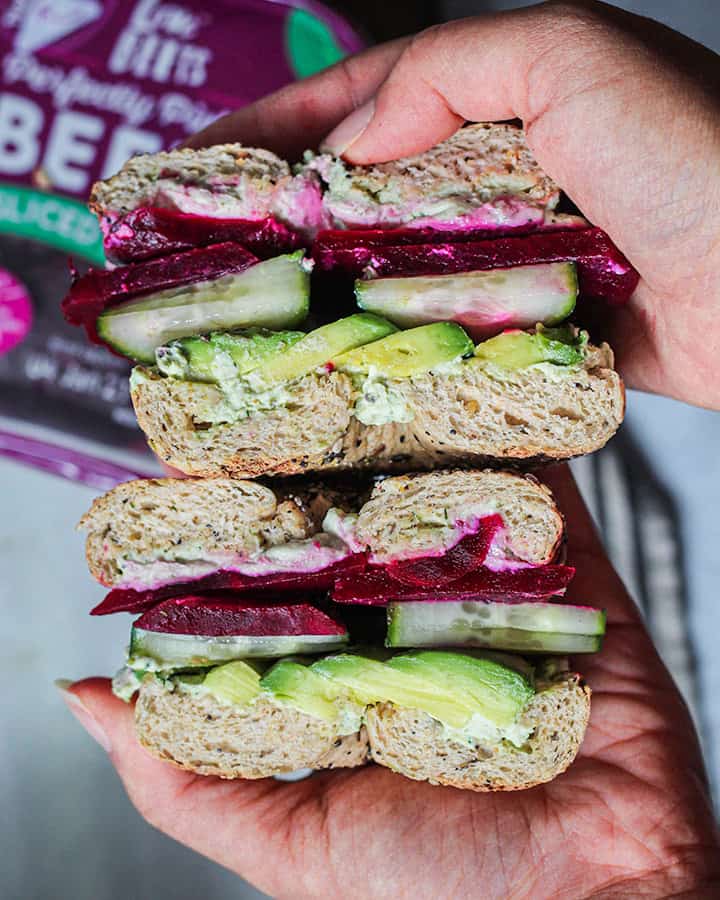
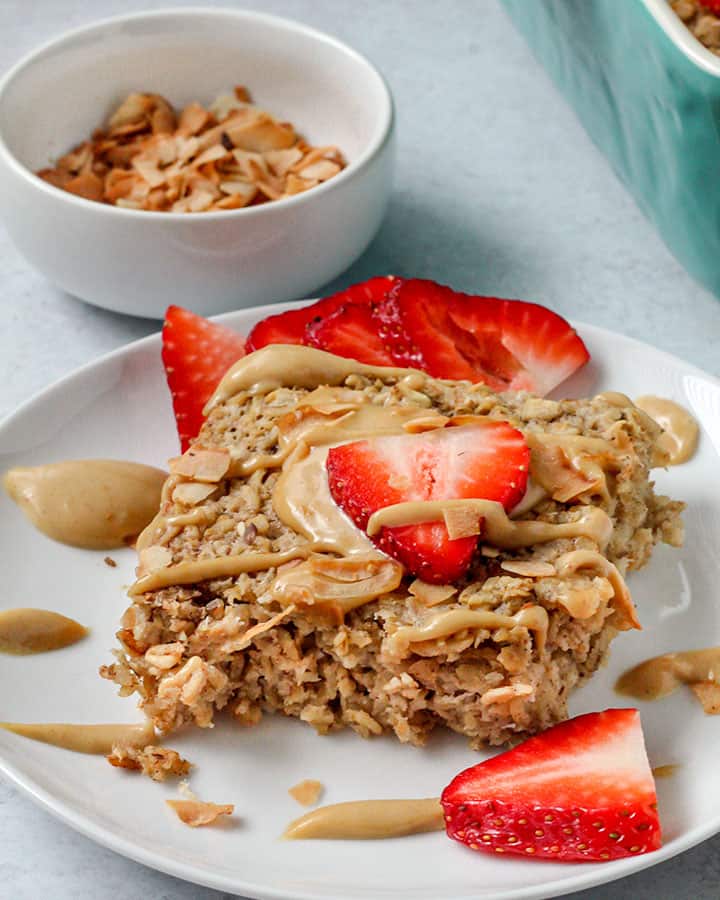
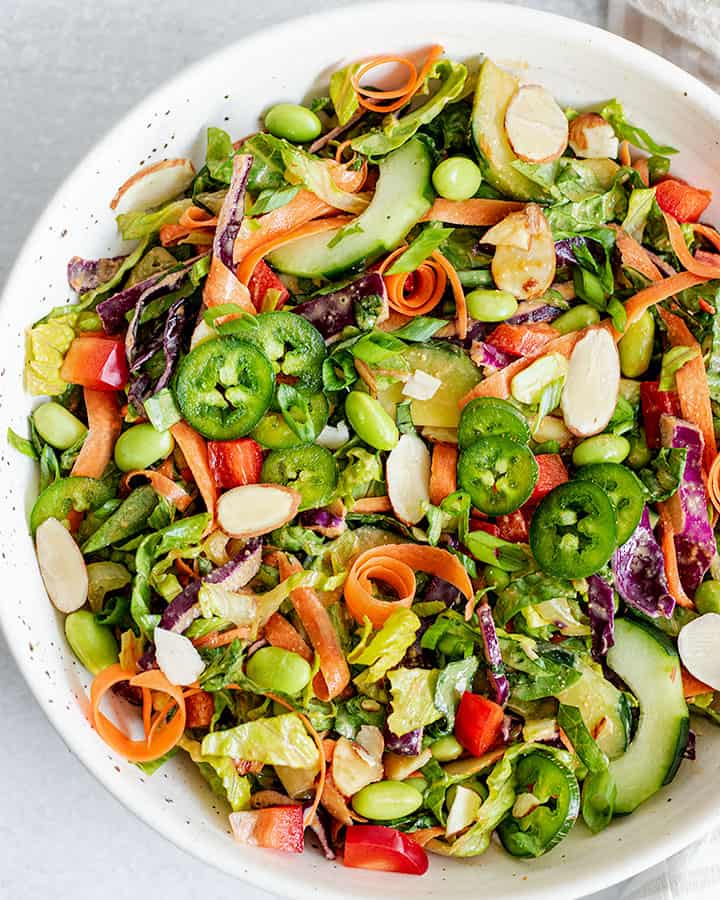
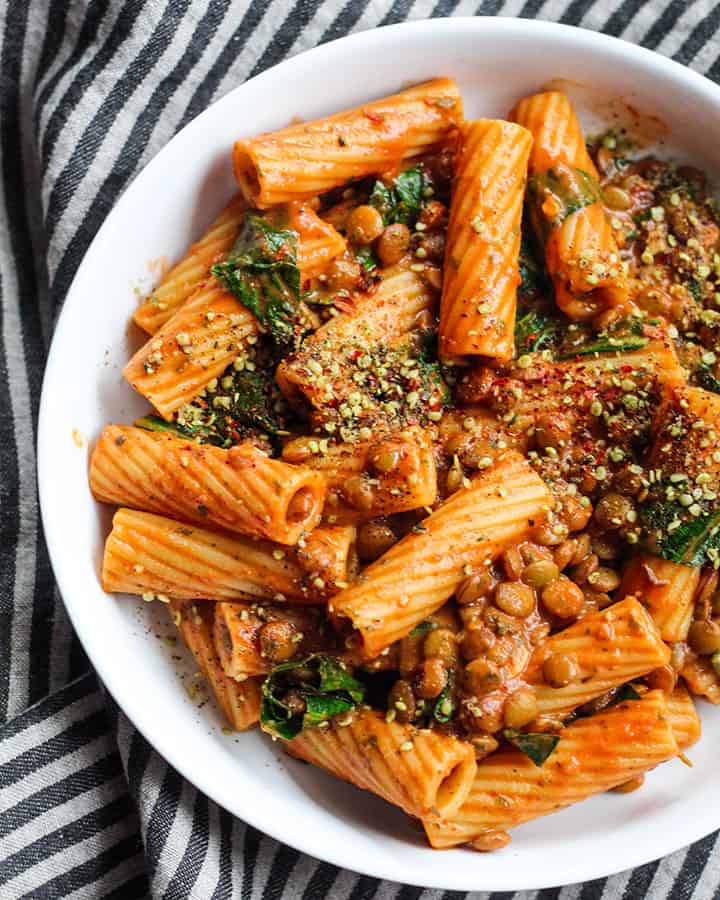
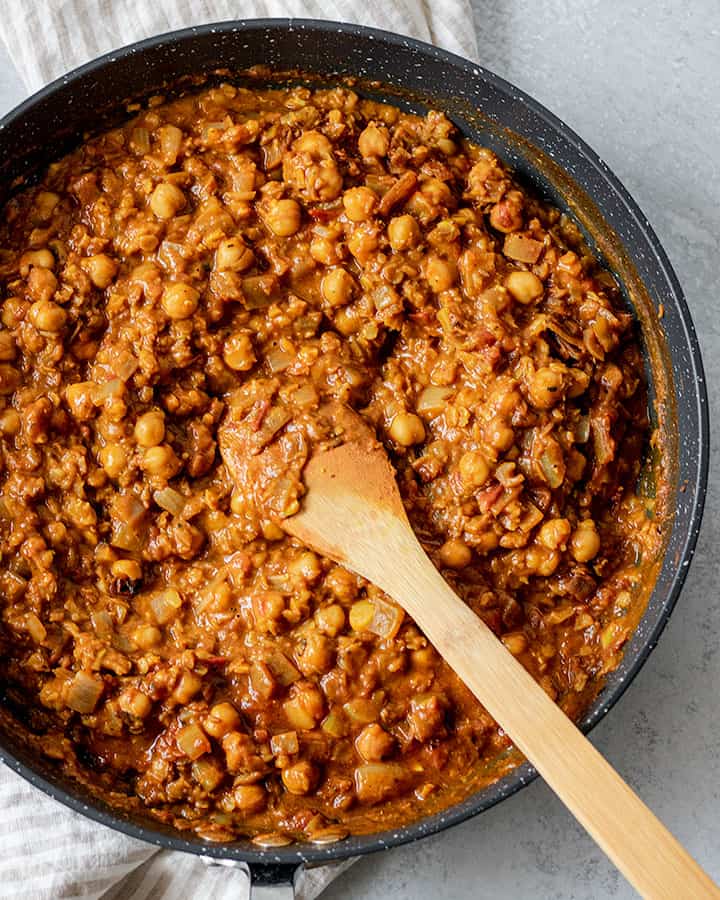
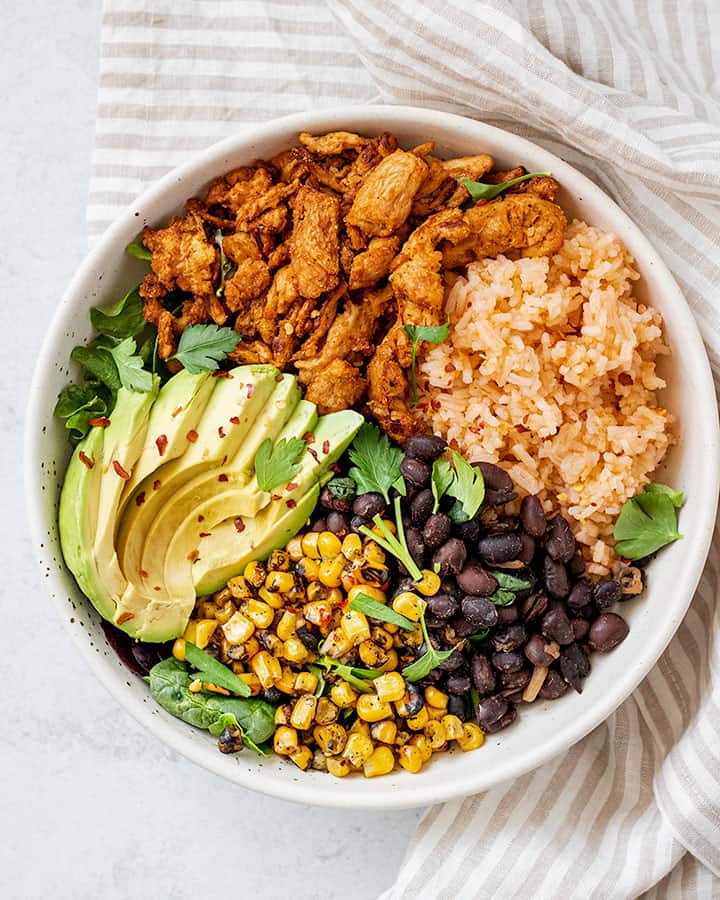
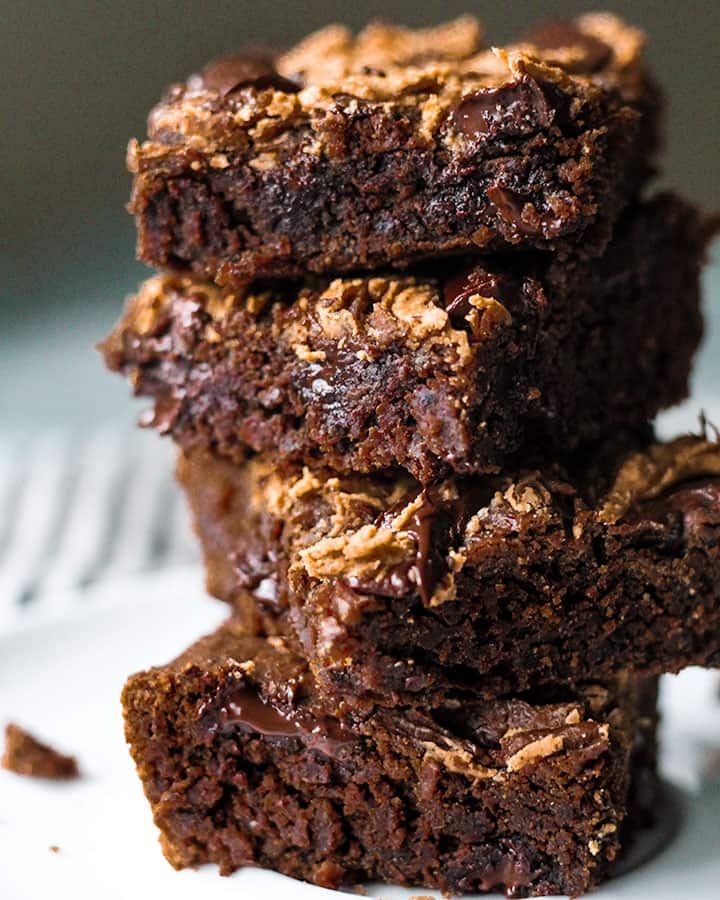
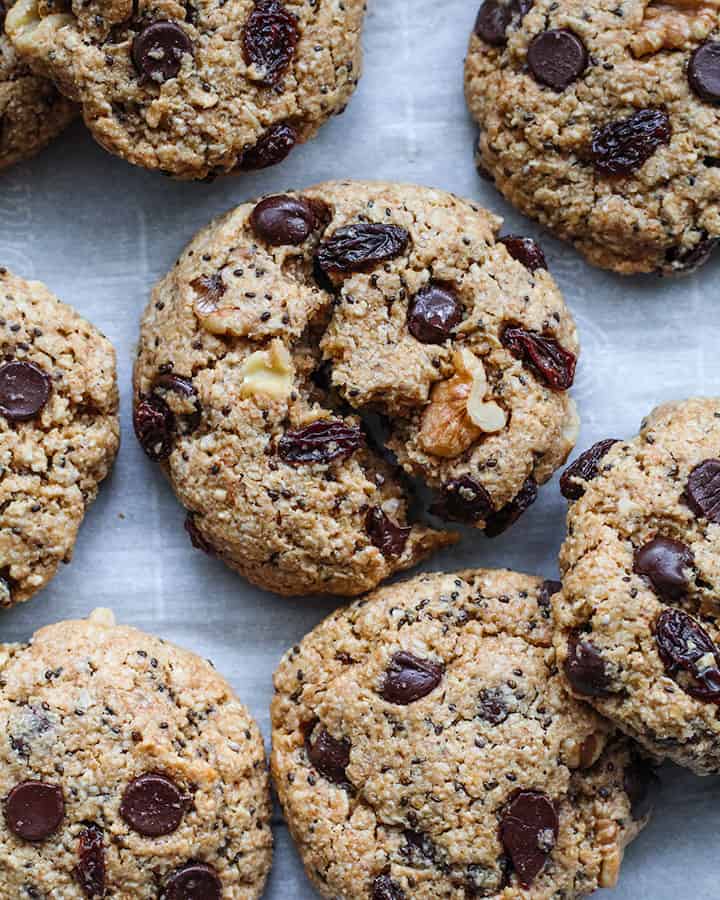
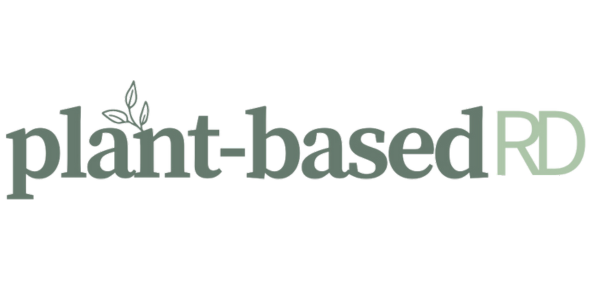
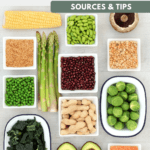
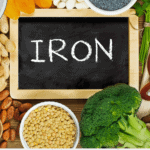
Thank you very much, very helpful and uncomplicated information
Awww, thank you so much for the feedback. So glad this was helpful. 🙂
Thank you Catherine, this post was just what I needed! You write in such an accessible but informative manner.
I’m so glad this post was helpful Emily! Thank you for reading! 🙂